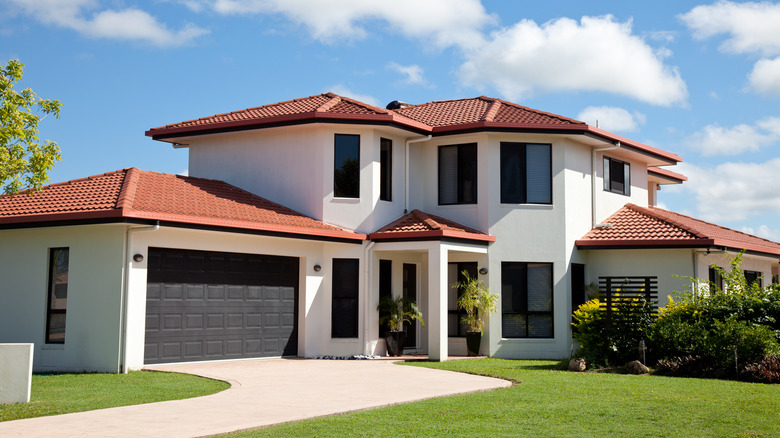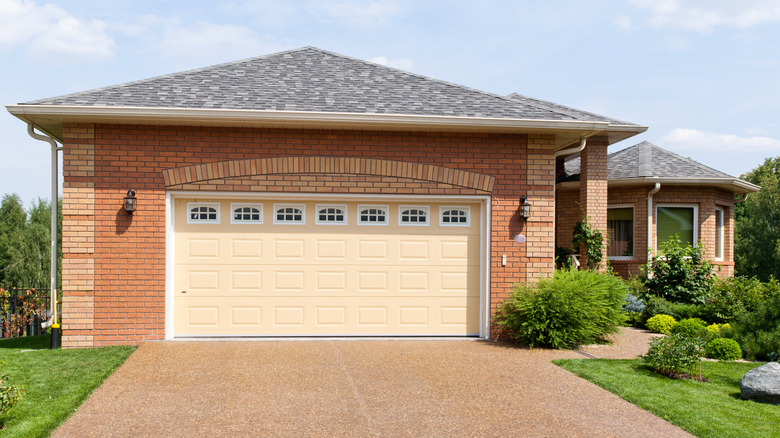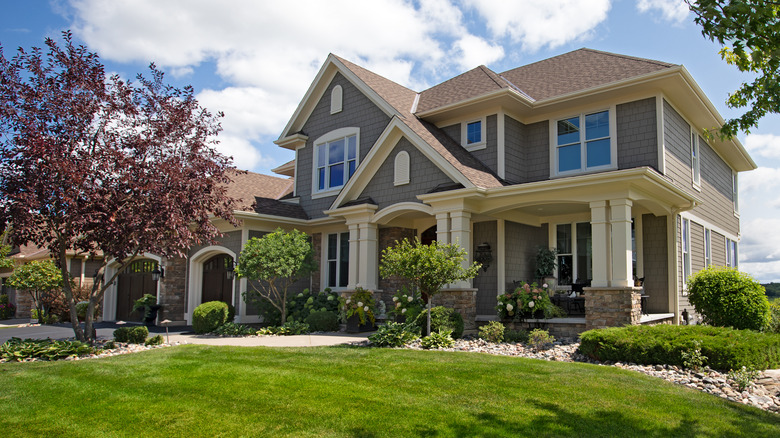What Is A Hip Roof And Is It The Right Roofing Style For Your Home?
A hip roof is one of those things you've likely seen yet never knew its proper name. It's been around for centuries and continues to be among the most popular roof styles across many countries, including the United States. The gable roof is a hip roof's biggest competition and closest in appearance. To distinguish the two, try visualizing tents.
A gable roof resembles the trusty standard made from a pole or two and a tarp. It's open on both ends and looks kind of like an upside-down "V." When looking at a home, the flat empty space on the two sides will typically be a continuation of the exterior siding, be it wood, brick, or another building material. A hip roof, meanwhile, is the tent made for glamorous camping. That tent involves many connecting poles and is completely enclosed. A home with a hip roof follows the same concept. All four sides, or more if you're being fancy, will have a sloped roof component, and the home will look as if it is completely enclosed by the roof.
Choosing the right roof is dependent on several factors, including your environment, budget, desired interior space, and stylistic preferences. One look at a hip roof and you can probably guess that it will cost more than a gable roof, simply because of the additional materials and labor needed. As evident by the tent analogy though, a hip roof will perform better in windy conditions.
Hip roof advantages and disadvantages
Its ability to better withstand high winds make hip roofs a preferred choice where hurricanes or tornadoes are a potential threat. However, homes that experience a lot of snow will fare better with a gable roof. Most hip roofs are designed to have a gradual slope, whereas the slope of a gable roof is much steeper. Snow can't slide off nearly as easily with the former, so it will accumulate faster on a hip roof, putting more pressure on the home.
Stylistically, some may prefer the consistency a hip roof provides, All four sides extend the same distance, creating even lines one could find more appealing. That said, consistency comes with an interior drawback. Because the roof is extended on all four sides, a home with a hip roof needs additional bracing. The extra bracing will take up more attic space, leaving you less room for storage, while the vault-like interior of a gable roof does not have this issue.
Constructing a hip roof
If you do choose to go the route of a hip roof for your new home build, it's common enough that any good roofing contractor will know of its build and can offer up design variations. It's also complex enough to require an extra level of skill. Like any roof, a hip style that's not properly installed will be susceptible to leaks, particularly around the areas where the sides of the roof meet.
Should your existing gable roof require a replacement, you can transform it into a hip roof without dismantling the whole thing. You could also combine the two looks and create a roof made with features of a hip and gable. A contractor will make for a good consultant on either project. When it comes to materials, the two roof styles can utilize many of the same things. Just remember, a hip roof will require more building materials, so factor that into your budget.


